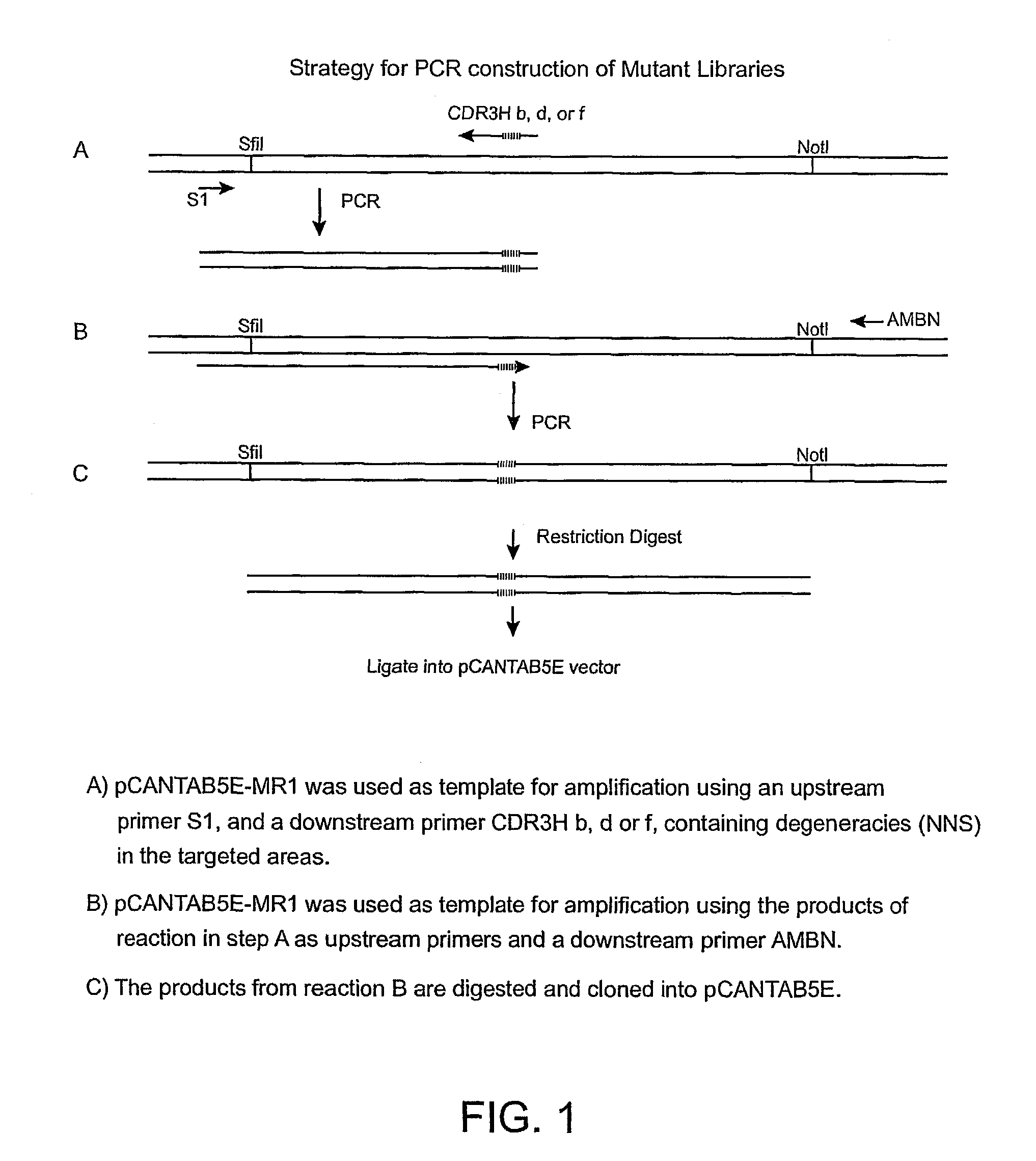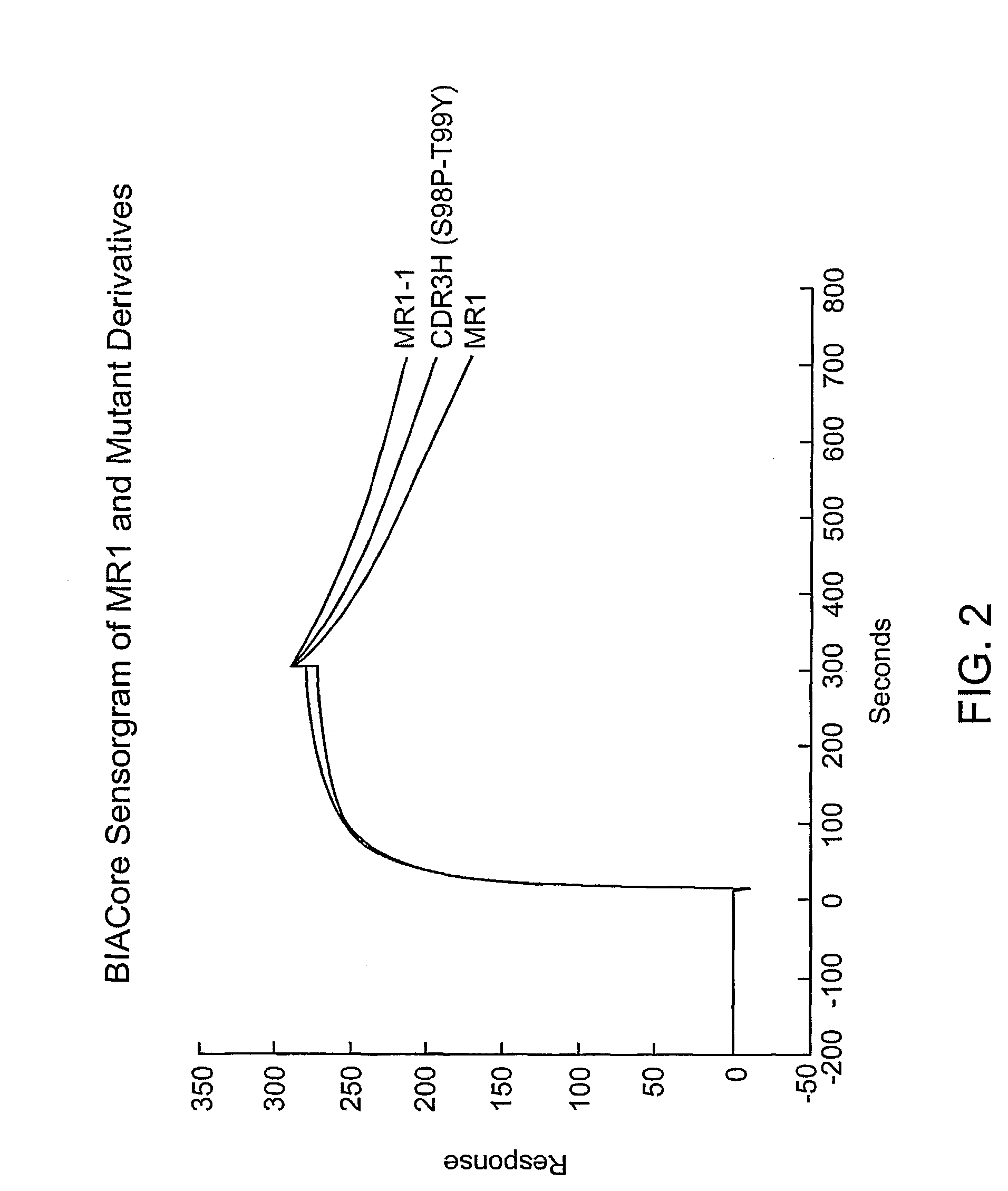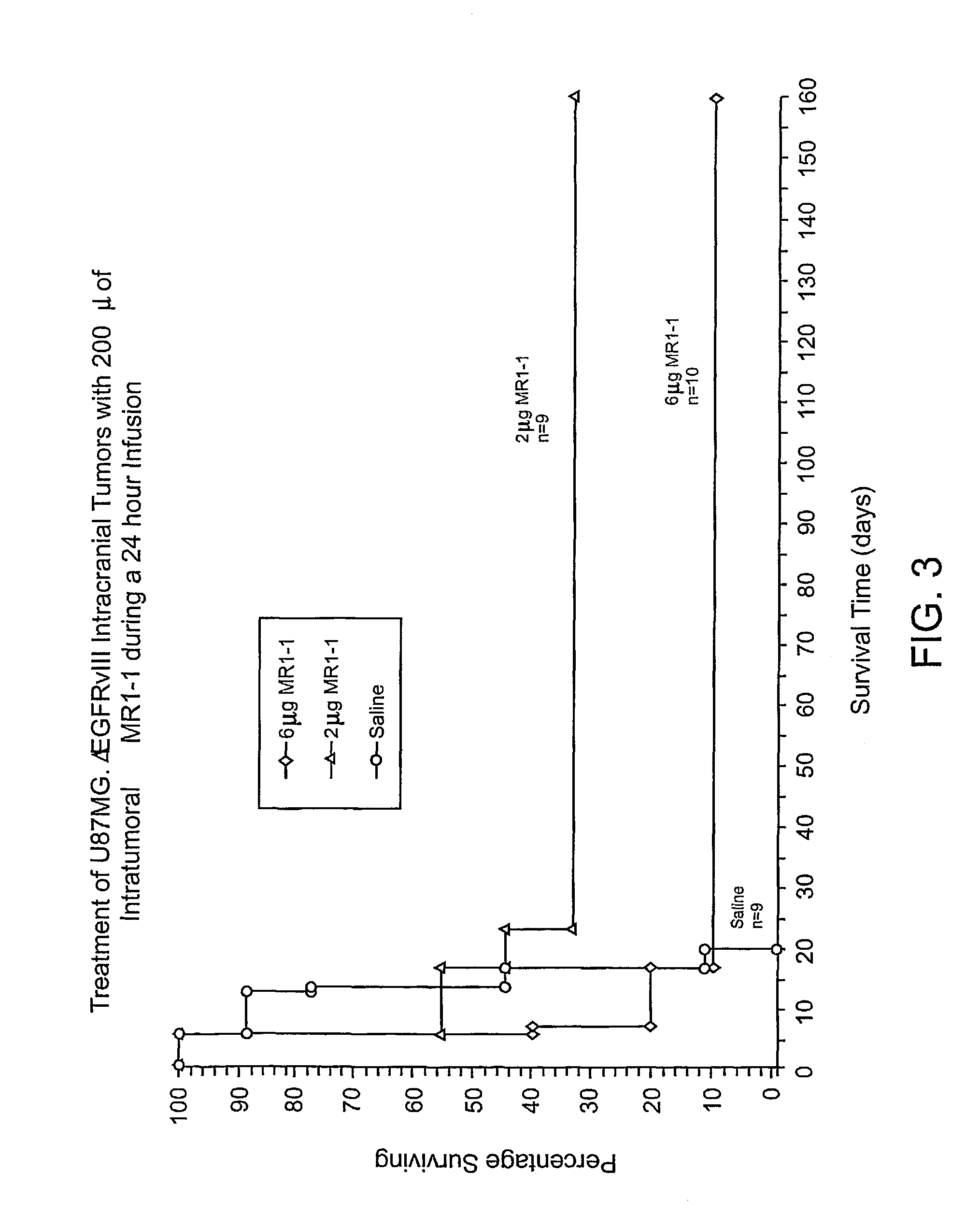Anti-EGFRvIII scFvs with improved cytotoxicity and yield, immunotoxins based thereon, and methods of use thereof
a technology of immunotoxins and cytotoxicity, which is applied in the field of antiegfrviii scfvs with improved cytotoxicity and yield, and immunotoxins based thereon, can solve the problems of limited tumor penetration, heterogeneity of linkage, and difficulty in producing conjugates in large quantities, so as to achieve the effect of improving binding
- Summary
- Abstract
- Description
- Claims
- Application Information
AI Technical Summary
Benefits of technology
Problems solved by technology
Method used
Image
Examples
example 1
[0172]Strategy to Develop Antibodies with Better Binding than that of MR1.
[0173]To discover antibodies with better binding to EGFRvIII than that of MR1, a phage display library was made with MR1 scFv. Random mutations were introduced in heavy chain complementarity determining region 3 (VHCDR3), an area that has a major role in antigen binding (MacCallum et al., J. Mol. Biol. 262:732–745 (1996)). Panning on cells expressing EGFRvIII produced several mutants which, when used to construct immunotoxins, had improved affinity, cytotoxicity, and yield. Analysis of these variants revealed that they all had mutations localized to a region of the VHCDR3 which qualifies as a hot spot for hypermutation (Neuberger et al., Curr Opin. Immunol. 7:248–254 (1995); Jolly, C. J., Semin. Immunol. 8:159–168 (1996); Neuberger et al., Immunological Rev. 62:107–116 (1998)). Hot spots are defined by the consensus sequences G / A-G-T / C-A / T or A-G-C / T. The latter contains serine codons found in the variable dom...
example 2
[0174]Construction of VH Mutant Library. The VHCDR3 of MR1 consists of eleven amino acids. As noted in the Introduction, two of these amino acids were considered unlikely to participate in antigen binding. The other nine amino acids in the VH were mutated by substituting all of the other natural amino acids as follows for the amino acid residue normally occurring at the position. DNA oligomers were designed to generate three libraries, each randomizing nine nucleotides, (three consecutive amino acids). MR1 phagemid was used as template to introduce three amino acid randomizations in the CDR3 heavy chain in 3 separate two-step polymerase chain reactions (PCR) (FIG. 1). The following oligos were used:[0175]CDR3Hb (5′-CTTGGCCCCASNNSNNSNNAGAGGTACTAGAATAGCCTCTTGTGCA-3′), (SEQ ID NO: 1)[0176]CDR3Hd (5′-CTTGGCCCCACATAGCATASNNSNNSNNAGAATAGCCTCTTGTGCA-3′), (SEQ ID NO: 2)[0177]CDR3Hf (5′-CTTGGCCCCACATAGCATAAGAGGTACTSNNSNNSNNTCTTGTGCA-3′), (SEQ ID NO: 3)[0178]S1 (5′-CAACGTGAAAAAATTATTATTCGC-3′...
example 3
[0192]Construction of the VHCDR3 Library. To increase the affinity of the MR1(Fv) and the activity of the corresponding immunotoxin MR1(FV)-PE38, we mutated VHCDR3 and VLCDR3 because these portions of the antibody make significant contacts with the antigen (MacCallum et al., J. Mol. Biol. 262:732–745 (1996)). The first nine of the eleven amino acids of VHCDR3 are shown in Table 5 (the last two, D101 and Y102 are excluded since they were considered unlikely to contribute to antigen binding). Because a complete library in which nine amino acid residues were randomized would require more than 5×1011 individual clones, we instead prepared three different libraries covering residues 95–97, 98–100 and 101A–101C as described in Example 1. Library H-CDR3 95–97 contained 1.6×106 clones, library H-CDR3 98–100, contained 4×105 clones and library H-CDR3, 100A–100C contained 1×106 clones. To ensure the libraries were properly made, five clones from each library were sequenced. As expected, each ...
PUM
| Property | Measurement | Unit |
|---|---|---|
| time | aaaaa | aaaaa |
| average bond energy | aaaaa | aaaaa |
| temperature | aaaaa | aaaaa |
Abstract
Description
Claims
Application Information
 Login to View More
Login to View More - R&D
- Intellectual Property
- Life Sciences
- Materials
- Tech Scout
- Unparalleled Data Quality
- Higher Quality Content
- 60% Fewer Hallucinations
Browse by: Latest US Patents, China's latest patents, Technical Efficacy Thesaurus, Application Domain, Technology Topic, Popular Technical Reports.
© 2025 PatSnap. All rights reserved.Legal|Privacy policy|Modern Slavery Act Transparency Statement|Sitemap|About US| Contact US: help@patsnap.com



